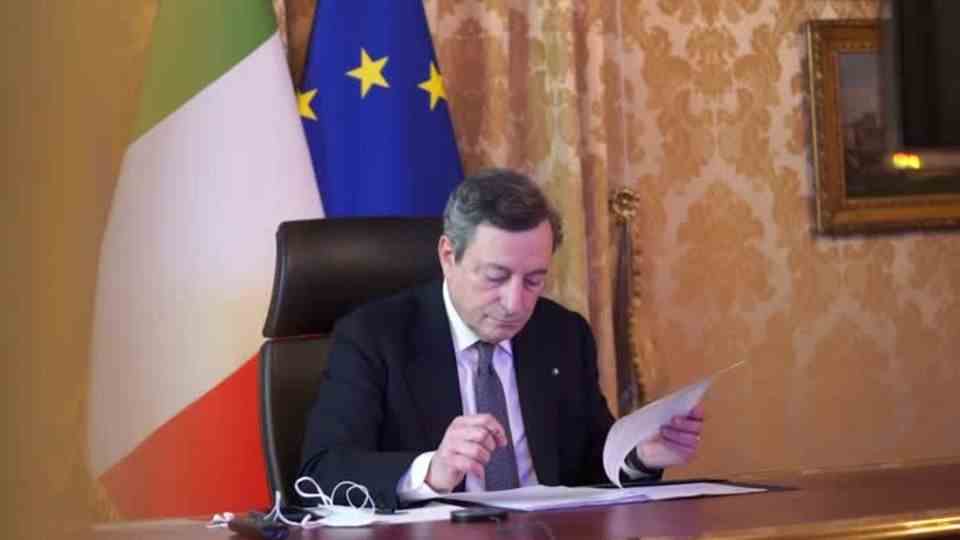+++ breaking news +++
government crisis
Italy’s head of state accepts the resignation of Prime Minister Draghi
Italy’s President Sergio Mattarella (l) and Prime Minister Mario Draghi in the Quirinal Palace
© Francesco AMMENDOLA / Quirinale Press Office / AFP
Italy’s Prime Minister Mario Draghi resigns after unrest in the government and a vote that went wrong for him. In order for his resignation to become official, he has to go to the head of state. He has now decided.
Italian President Sergio Mattarella has accepted the resignation of Prime Minister Mario Draghi. This was announced by the Quirinal Palace in Rome on Thursday. The prime minister submitted “his resignation and that of his government”. The government will initially remain in office for ongoing business.
Mattarella thus plays an important role in the future of the country with its almost 60 million inhabitants. Next, he must decide whether to dissolve the chambers of parliament, paving the way for a snap election, or seek an expert or politician to form a new governing majority from the existing parliament.
Draghi wins confidence vote but fails to form majority
Earlier, Draghi said in the Chamber of Deputies in Rome: “Against the background of last night’s vote in the Senate, I ask that the sitting be adjourned because I will go to the President of the Republic to inform him of my decision.” According to the Italian news agency Adnkronos, Draghi received a standing ovation in the plenary hall. “Central bankers use their hearts too, thanks for all the work,” he said.
Draghi won a confidence vote in the smaller chamber of parliament, the Senate, on Wednesday. However, he missed his goal of uniting a broad parliamentary majority there because three major parties in his cabinet did not vote. A large majority was one of his conditions for continuing to rule. Draghi already wanted to resign last Thursday. However, Mattarella turned down the offer.
Draghi’s government, which has been in office since February 2021, was supported in parliament by parties from the left to the far right. But it was plunged into a crisis last week when the Five Star Movement (M5S), which is part of the government, boycotted a vote of confidence in Draghi in the Senate.
Political chaos in Italy – shift to the right possible
Italy is slipping further and further into political chaos. In the morning, the markets reacted to the threat of political instability in the EU’s third largest economy with a downward movement. The stock exchange in Milan was in the meantime two percent in the red. The risk premium for ten-year Italian government bonds in relation to German government bonds rose significantly. The highly indebted Italy could thus pose a threat to the EU and the euro, which could come under pressure.

Mattarella’s decision could have serious repercussions for the Mediterranean country. An early election would initially mean political standstill and cause instability in Italy, but also in Europe. Parliament should actually push through further reforms in order to secure billions of euros in corona reconstruction funds from Brussels. In addition, the budget for 2023 has to be planned, which traditionally causes a lot of controversy in Italian politics.
According to polls, the election could also significantly change the political landscape. Giorgia Meloni’s right-wing extremist opposition party, Fratelli d’Italia, is currently in the lead. Together with the right-wing Lega and the conservative Forza Italia, the centre-right bloc could thus unite a large number of people and, in the end, perhaps even a parliamentary majority behind it.
Editor’s note: Headline clarified to say Draghi submitted his resignation and it was accepted. The article has been continuously updated.

